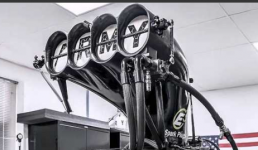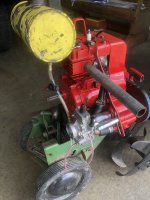the flywheel can’t take much of anything past stock 3,600rpms because the magnet on the flywheel is held on with a screw and glue... (China)
Not true. Yes they are epoxied on and pinned in place with a metal plate and a single screw, which is specifically to compress the air bubbles out of the freshly blobbed on epoxy.
Better quality flywheels will actually have a plastic cap sandwiched in there that keeps the excess squished out epoxy contained leading to a more solid bond.
That said you need to stop with bad info because the majority of all stock flywheels are perfectly solid up to 5k. This does not mean that there has never been a bad or abused flywheel that blew up between 3800 and 4800... there have been plenty.
The odds of getting a factory cast iron flywheel that frags under 6k are about the same as buying a dud ignition coil... extremely rare, but shıt happens. The factory original cast iro 3 magnet flywheel on my 208 gets spun at 5k-6k frequently.
Just today I flogged the throttle and accelerated from 5-35 up a steep grade whith the tach reading above 5600 and that's not even letting the engine go until it stops accelerating.
I readjusted my TC and got the rpm pull down they are known for to be less agressive even with the 5.4:1 FD and 23.9 tire diameter.
If you intend to run boost seriously your gonna need at least a flywheel.
This is true, and a cast aluminum PVL is QC'd to 17k... more than any other engines we play with are going to turn, built, boosted, or both.






